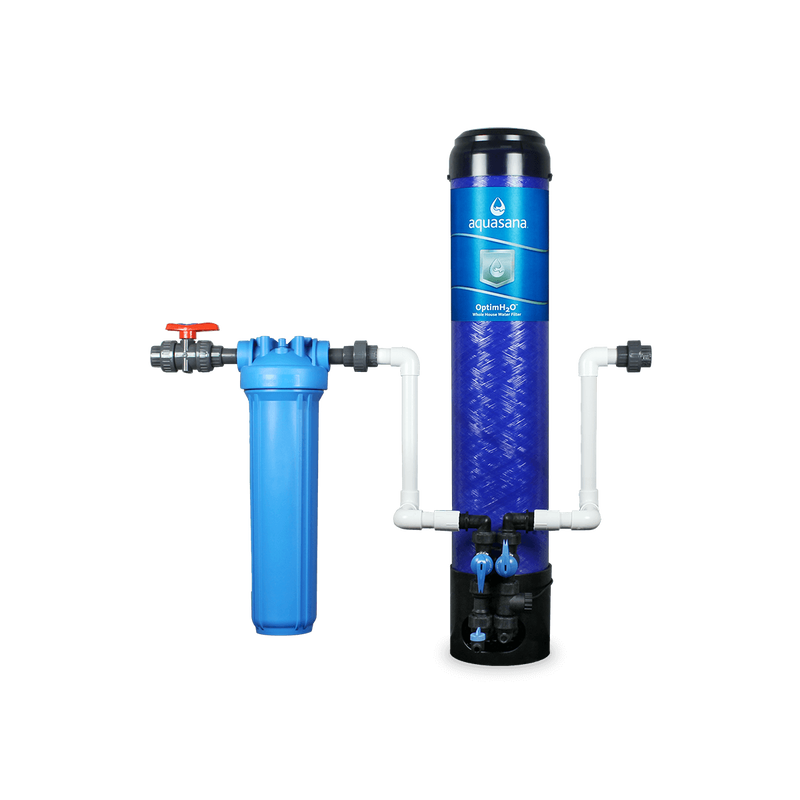So, why is all of this important? Both the Environmental Protection Agency (EPA) and the Center for Disease Control (CDC) list cancer as one of the main health risks associated with PFAS. Thanks to their use in industrial manufacturing and fire extinguishing foam, PFAS has made its way into our water supply in concerning levels across the country. Shockingly, scientists have published studies showing that PFOA has been detected in the blood of more than 98 percent of the U.S. population.
And cancer isn’t the only concern. In some studies, scientists found that participants with serum levels of PFAS were positively associated with an increased chance for things like Chronic Kidney Disease. The EPA also cites studies that indicate exposure to PFOA and PFOS over certain levels may result in developmental effects to fetuses during pregnancy, liver damage, immunity changes and more.
With that, here are 10 ways to safeguard your home and family from PFAS.
1. Check your location
The U.S. Center for Disease Control (CDC) ranks drinking contaminated water at the top of their list for PFAS exposure. To see if your area’s drinking water has been identified as contaminated, check the Environmental Working Group’s interactive map of contamination sites across the country. Keep in mind, though, that not all water supplies in the U.S. have been tested. Even if your town is not on the list, take note of where you’re located. Homes near or downstream from a fire station, airport, military base or industrial manufacturing facilities are at higher risk for exposure.

2. Test your water
In April 2024, the EPA released a new rule for five PFAS chemicals that essentially sets maximum contaminant levels (MCL) at near zero levels. If your home uses municipal water, you can request a copy of your city’s annual water quality report. Alternatively, if your home uses a private well, test your own water by using an at-home test kit.
3. Invest in a water filter
Filtering your drinking water is the most effective way to proactively protect your home and family. Keep in mind that not all water filters remove PFOA and PFOS. Look for systems that have been tested and certified with NSF, WQA, or IAPMO to NSF/ANSI Standards 53 and 58, which guarantees the reduction of PFAS chemicals. Note that while these standards are being updated to align with the EPA’s PFAS National Primary Drinking Water Regulation (NPDWR) rule from April 2024, your best means of protection is to look for systems that are certified to the current standards. All Aquasana drinking water filters, including our under sink and countertop systems, have been tested and certified to NSF Standards 53 and 58 for the reduction of PFOA/PFOS, and we were the first water filter maker to receive certification for the reduction of PFAS chemicals. If you’re looking to reduce contaminants from every tap in your home, the OptimH2O® Whole House filter reduces 98% of PFOA/PFOS in addition to reducing lead, chlorine, chloramines and more. Visit NSF.org or IAPMO.org to see the full list of filters certified for PFOA/PFOS removal.
4. Check your labels
Check the labels on cosmetics, skin care, personal hygiene, and cleaning products. Toss out any that contain the words “PTFE” or “perfluoro” in the list of ingredients. If in doubt, check the Environmental Working Group’s list of verified toxin-free personal care products at EWG.org.
5. Avoid greasy fast food
One more reason to skip the drive-thru! PFOA/PFOS is used in some food packing to repel grease, including fast-food wrappers, containers and pizza boxes. Since these chemicals are also used to line the inside of microwave popcorn bags, go old-fashioned and pop your corn on the stove.
6. Skip the stain repellent
Choose carpets and furniture that have not been treated with a stain repellent and wash your hands frequently. Limiting hand-to-mouth transfer from surfaces treated with PFAS is especially important for parents with crawling toddlers and little ones just learning to walk.
7. Check your wardrobe
PFAS can also be found in clothing and accessories, including stain- and water-repellent fabrics. Opt instead for natural fabrics instead like untreated cotton and wool.
8. Avoid non-stick cookware and utensils
There are times when you may consider non-stick pans a must, but try to cook with stainless steel, aluminum, and cast iron pots and pans whenever possible.
9. Know your fish
According to the CDC, eating certain types of fish and shellfish can risk exposure. While you may not always be able to identify if the fish you’re eating was caught in contaminated water, you can check if your state has issued any fish consumption advisories. The EPA also has a safe eating guide specifically for fish and shellfish.
10. Change your air filters regularly
PFAS can be transmitted through the air and can travel long distances. To protect your home, change your air filters frequently and keep an eye on your daily local air-quality reports.

Even though major companies that previously used PFAS have started (or are already well into) the process of phasing out PFAS, they’re considered bioaccumulative, can be transferred airborne, in the groundwater, and elsewhere, and are expected to remain on the environmental watchlist for the foreseeable future. That’s why it’s important now, more than ever, to know how to protect yourself from PFAS.
WHOLE HOUSE WATER FILTER
OptimH2O®
Tested and certified to reduce lead, cysts, and PFOA/PFOS, plus tackles chlorine and chloramines.



